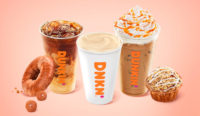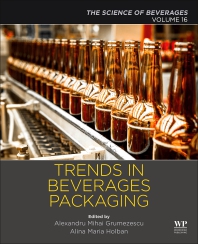NPD Eyes Five Key Trends
Sluggish restaurant traffic growth and stalled sales in the center aisles at grocery stores are evidence that US consumers’ eating behaviors are evolving

Hispanic population growing, emphasizing more fresh foods and scratch cooking.
SOURCE: iStock photo © andresr

Millennials drive food trends at retail and foodservice; prefer fresh, less-processed foods.
SOURCE: iStock photo © RapidEye

Boomers turn to more healthful foods, such as those high in whole grains, protein, and calcium; or low in saturated fat, cholesterol and sodium.
SOURCE: iStock photo © Minerva Studio



Sluggish restaurant traffic growth and stalled sales in the center aisles at grocery stores are evidence that US consumers’ eating behaviors are evolving.
The growing influence of Hispanics, Millennials going through life stages, aging boomers, smaller households, and the need for fresh and non-processed foods are among the factors driving the shift in what and how consumers eat, reports The NPD Group, a leading global information company.
“Visits to US restaurants are forecast to grow less than 1% a year over the next decade, slower than the 1.1% a year growth in the country’s population,” says Bonnie Riggs, NPD restaurant industry analyst. “A greater share of visits will source to those 50 years and older in 2019, but as consumers age they become less frequent restaurant users. This means the restaurant industry will have heavier dependence on lighter buyers.”
Darren Seifer is a NPD food and beverage industry analyst.
“Macro food and beverage consumption behaviors are slow to shift akin to the movement of the continental plates. If you sit and stare at the plates along a fault line you’re not going to observe any discernible difference from one moment to the next,” he says. “However, if you put a stake in the ground on both sides and return some time later you will see that a small but definite movement occurred. Food manufacturers, foodservice operators, and retailers need to be aware of these slow changes in behaviors or they will be caught off guard. “
The NPD Group, which has been continually tracking all aspects of how consumers eat in- and away-from-home for over three decades, finds that among the changes in demographics and behaviors driving the evolution in eating behaviors are:
-
Hispanics: The US Hispanic population is growing exponentially compared to non-Hispanics. In 2014 US Hispanics grew restaurant visits while non-Hispanic visits declined. In-home, the Hispanic population combined with their adherence to dining traditions is beginning to influence national consumption patterns.
Fresh and from scratch are the most common food forms during Hispanic meal preparation. Stovetop preparation dominates Hispanic meals more than non-Hispanic meals due to the types of dishes being prepared.
-
Millennials: In 2015, the Millennial generation is projected to surpass the Baby Boom generation as the nation’s largest living generation, according to the US Census Bureau population projections. Based on its sheer size, as Millennials go so goes the food and foodservice industries. Millennials are driving changes in this country’s eating behaviors with their approach to food choice and preparation. They like fresh, less processed food, which has played out in their preference for fast-casual restaurants that offer freshly prepared foods and shopping the perimeter of grocery stores where fresh and non-packaged foods can be found.
This generation is in a life stage when they would, historically, visit restaurants more often than other age groups, but in recent years they have cut back to the point where 50+ year-olds go out more often than Millennials do. In addition, 65% of US Hispanics, a growing population base, are Millennials or younger.
-
Aging Boomers: The Baby Boomer generation is aging, considering retirement, becoming empty nesters and developing health ailments—all of which are typically associated with major changes in the way consumers approach food and beverage consumption.
While shrinking in size, this generation is still too large to ignore especially given their expected lifestyle changes. This group will be less driven by the latest fad and more by what they need to sustain their health and lifestyles. Healthful foods, such as high in whole grains, protein, and calcium, or low in saturated fat, cholesterol, and sodium, will be of most interest to this generational group. Boomers’ restaurant visits have surpassed those of younger adults, who have cut back on visits during the past several years.
-
Smaller Households: Consumption behaviors in the US have become less household-oriented and more individualized than previous generations and now more than 50% of eating and beverage occasions happen when consumers are alone. Also contributing to consumers dining alone is that 27% of all households now consist of just one person — the highest level in US history, according to the US Census Bureau.
The number of solo eating and drinking occasions has wide-ranging implications for food and beverage marketers and foodservice operators in terms of new product development, packaging and positioning, restaurant seating design, menu development and more.
-
Fresh: From 2003 to 2013, consumption of fresh foods—including fruits, vegetables, meat, poultry, fish, and eggs—grew by 20% to more than 100 billion eatings and it’s the youngest generations, Generation Z and Millennials driving the trend.
In addition to eating more fresh foods, Generation Z and Millennial consumers also are interested in eating more organic foods. In terms of foodservice visits, Millennials prefer fresh ingredients and freshly prepared items. These are key differentiators among many fast casual vs. traditional quick-service restaurant formats. An aspect of freshly prepared that suits Millennials are menu components that are made to order or that can be customized.
Looking for a reprint of this article?
From high-res PDFs to custom plaques, order your copy today!









